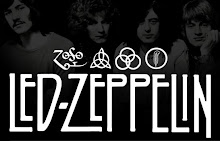Robert Frost's "Design" is a meditation on human attempts to see order in the universe--and human failures at perceiving the order that is actually present in nature. The speaker of the poem perceives what he takes to be a significant coincidence, then speculates on what the coincidence might mean, or whether it means anything at all. However, he fails to see that there is a very good reason for the coincidence he spots, and the "design" of nature that it implies is quite different from anything he suggests.
DesignI found a dimpled spider, fat and white, On a white heal-all, holding up a moth Like a white piece of rigid satin cloth-- Assorted characters of death and blight Mixed ready to begin the morning right, Like the ingredients of a witches' broth-- A snow-drop spider, a flower like a froth, And dead wings carried like a paper kite.
What had that flower to do with being white, The wayside blue and innocent heal-all? What brought the kindred spider to that height, Then steered the white moth thither in the night? What but design of darkness to appall?--If design govern in a thing so small.
The starting point for the speaker's thinking is what he perceives to be a coincidence: a white spider sits on a white flower holding up a white moth. The coincidence is even more striking because heal-alls are usually blue.
In Western culture, the color white usually symbolizes goodness, purity, and innocence. The language of the poem suggests these connotative links: the spider is "dimpled" as well as "fat and white," like a newborn baby. The moth's wings are like a "white piece of rigid satin cloth," like a bridal dress (or perhaps the lining of a coffin; already the speaker seems to be looking for the "darker" underside of the color white). The name "heal-all," too, suggests health, or perhaps the wisdom and benificence of a healer.
By the end of the octet, the contrast between the positive connotations of the color white and the apparent gruesomeness of the scene before the speaker is made explicit. On the one hand, the scene is one of "death and blight," mixed like a "witch's broth" and including "dead wings." On the other hand, the spider is like a "snow-drop," suggesting purity, and the moth's wings are like a "paper kite," suggesting innocence.
In the sestet, the speaker wonders how this coincidence of a white spider and white moth on a white flower came to be, especially given the ironic tension between the positive connotations of the color symbolism and the negative connotations of the spider's killing of the moth. The speaker seems to absolve any of the three of any blame, however: the heal-all is "innocent," and so, apparently is the spider, who is "kindred" to the flower. The innocence of the moth hardly needs to be established.
In the closing couplet, the speaker offers two answers to the question of how the coincidence of the three white creatures came to be.The first possibility is that there is a force of evil at work that has created a "design of darkness to appall"--Satan, perhaps, delighting in the blasphemy of clothing a scene of destruction in the color of innocence and purity. The second is that there is no order in the universe at all, or at least none that operates on such a minute level: the "design of darkness" could exist only if "design govern in a thing so small." Since God is thought to govern everything, no matter how small, the possibility that design doesn't govern in small things immediately raises the possibility that there is no God to order the big things--such as human lives--either.
The speaker, then, has articulated the problem of how evil is possible in a universe created and watched over by a benevolent God. Given that there is evil in the world, then it appears that either God is not all-powerful, or there is no God.
There is a third alternative, however, that the speaker does not consider.
Any careful observer of nature, which Frost certainly was, can tell you that there is a perfectly logical explanation for the apparent coincidence of three white creatures appearing together. A white heal-all is unusual--the result, probably, of a recessive gene--but hardly cause for the kinds of metaphysical speculation in which the speaker engages. Given its existence, the presence of the other two creatures follows quite naturally. A white moth would be attracted to a white flower because it would offer some concealment from predators; a white spider would be attracted to a white flower because it would offer some concealment from prey. There is indeed a "design" at work, but it is not a "design of darkness"; it is simply the order of nature.
The existence of such a design leaves open the question of whether God exists.An atheist would take the explanation above as evidence that there are rational explanations for natural processes, and that there is no need to invoke the concept of God to explain how the universe works. In other writings, Frost does appear to profess belief in God (albeit belief of a complex kind). The focus of "Design," then, is not ultimately the existence or absence of God, but rather the tendency of humans to engage in what John Ruskin called the "pathetic fallacy"--the act of reading oneself into nature. The first act of responsible belief, Frost implies, is seeing nature as it is.
Saturday, December 13, 2008
Subscribe to:
Post Comments (Atom)

No comments:
Post a Comment